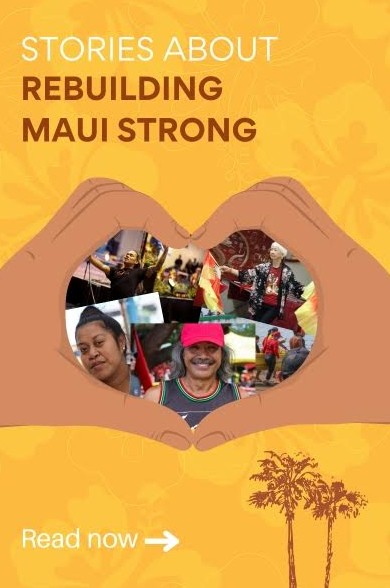By Nigel Whan
In 2020, a botanist working for Hawaiʻi’s Plant Extinction Prevention Program on a routine survey stumbled across what’s now been recognized as an entirely new plant species – Clermontia Hanaulaensis.
With less than a hundred known plants found only at high altitudes in western Maui, the plant is already being considered for designation as critically endangered.
Spectrum Local News reported that Clermontia Hanaulaensis is threatened by invasive plants, slugs, pigs and rats, as well as natural disasters.
AsAmNews spoke to Sienna Ventura, a Native Hawaiian student activist at the University of San Francisco, about the importance of the discovery.
She’s happy to have discoveries in Hawaiʻi’s ecosystem recognized by the scientific community, as “a reminder that Hawai’i’s ecosystem is incredibly unique and beautiful,” she said. “But, it is in danger.”
“Many native Hawaiian species have dwindled in numbers as invasive species continue to disrupt the native ecosystem. It’s sad to think that this species could have never been discovered,” she said.
Linking her Native Hawaiian identity with the islands’ native ecosystems, she sees the loss of native species as especially impactful. “As a Native Hawaiian,” she said, “plants and animals are a huge part of the culture. From weaving mats from lauhala to pounding kalo into poi, Hawaiians had a use and appreciation for the plants around them. They are tied into our culture.”
Shared with some other plants in the genus, the brand-new Clermontia Hanaulaensis plant has a colloquial name in Hawaiian, ʻŌhā wai.
Ventura said seeing both Native Hawaiian people and native Hawaiian plants lose their place on the islands hurts. “It hurts watching what makes Hawai’i, Hawai’i, disappear.”
This year, more Native Hawaiians are living away from the islands than on them, which Ventura said is mostly to the rising cost of living driven by the influx of new residents.
To Ventura, the severe wildfires that struck Maui in August were “a devastating tragedy that really put a spotlight on the two different Hawai’is. Within days of their home being burnt down and escaping the fires, people were already receiving offers on their land.”
Threatening both indigenous species and people, “the fire showed how quickly the native species and people can be taken away,” she said. Though the fire burned at lower altitudes than where the newly-discovered plants grow, the flowers’ home in the mountains of western Maui was one of the hardest-hit areas in the fires.
In Ventura’s view, Hawai’i’s conservation efforts still aren’t enough to protect native plants. To help, she thinks entry quarantines need to be stricter.
“For example, when people fly into Hawai’i they must fill out a paper on what agriculture they are bringing in and go through a quick agricultural inspection when they land. However, much of this process is amnesty-led [which] relies on a hope rather than a guarantee,” she said.
“I hope that we can find a way to preserve and protect the species and people that make Hawai’i, Hawai’i.”
Support our June Membership Drive and receive member-only benefits. With less than four days left in our fundraising drive, we are running out of time. We are just 51% of our goal of $10,000 in new donations and monthly and annual donation pledges and 44% of our goal of gaining 25 new recurring donors by the end of the month. We need your help during these challenging times. Please help to ensure quality content in amplifying the voices of the AAPI community.
We are published by the non-profit Asian American Media Inc and supported by our readers along with the Robert Wood Johnson Foundation, AARP, Report for America/GroundTruth Project & Koo and Patricia Yuen of the Yuen Foundation.
You can make your tax-deductible donations here via credit card, debit card, Apple Pay, Google Pay, PayPal and Venmo. Stock donations and donations via DAFs are also welcomed. Contact us at info @ asamnews dot com for more info.




